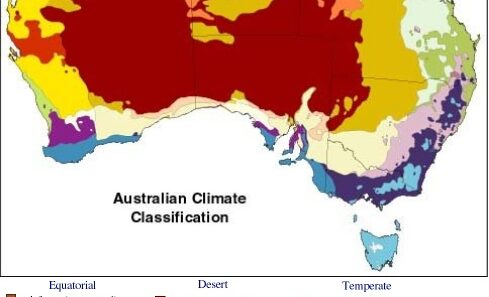The state of Tennessee captivates visitors with its breathtaking landscapes, rich cultural heritage, and welcoming communities. However, beneath its southern charm lies a complex climatic tapestry that significantly influences its ecosystems, agriculture, and day-to-day life. Have you ever wondered, “What climate zone is Tennessee in?” This seemingly simple question opens the door to a multifaceted exploration of Tennessee’s climate and how it affects the way of life for its residents. In examining TN’s climate zones, we delve into the heart of its distinct four seasons.
Tennessee predominantly falls into two climate zones: the humid subtropical zone and the temperate zone. Both of these classifications present unique characteristics and experiences throughout the year. The humid subtropical climate, largely influenced by the Gulf of Mexico’s warm air, predominates in the western and central parts of the state, whereas the temperate zone can be seen in the northeast region. This duality of climate illustrates the variability that Tennessee offers, making it a true kaleidoscope of weather experiences.
Ranging from the rolling hills of the western part of the state to the majestic Great Smoky Mountains in the east, the topography is as diverse as the climate it experiences. With this geographic diversity, one might ask: “How does the topography interact with climate, and what implications does that have for the environment?” The answer lies in understanding how different elevations and landscapes affect temperature and precipitation.
The Tennessee Valley, for instance, experiences milder winters due to the influence of the surrounding mountains. Conversely, the Appalachian region often sees heavier snowfall and cooler temperatures. This variation not only impacts how residents adapt their lifestyles but also influences agricultural practices throughout the state. Farmers must navigate these climatic nuances to optimize crop yields, meaning that crop selection can differ dramatically from one end of the state to the other.
Let us explore the seasons: spring, summer, autumn, and winter each present their character in Tennessee. Spring bursts forth with vibrant blooms and moderate temperatures. With average highs in the 60s and 70s, the season invites activities from hiking in the Great Smoky Mountains to enjoying local festivals. However, spring also poses a challenge: the potential for severe thunderstorms and tornadoes. Residents must stay vigilant as weather patterns can shift rapidly.
As spring gives way to summer, the climate intensifies. July temperatures often soar into the 90s accompanied by high humidity, fostering conditions that can be uncomfortable for many. The abundance of lush vegetation characterizes summer in Tennessee, but as the temperature rises, so too does the concern over heatwaves and drought conditions—a stark reminder of climate variability and its potential impact on water resources.
Transitioning into fall, the state transforms into a canvas of pastel colors. The air turns crisp, and temperatures cool down, making it an ideal time for outdoor activities such as apple picking and hiking the Appalachian Trail. Yet, while fall may bring breathtaking vistas of foliage, it is also a time to reflect on the impact of climate change. As temperatures and precipitation patterns shift, the vibrancy and timing of autumn colors are evolving. This raises an important question: “What actions can we take to mitigate the impacts of climate change on our beautiful landscapes?”
Finally, winter graces Tennessee with a varied spectacle. In the eastern region, snowflakes may blanket the mountains, providing a picturesque scene, while the western part may see milder winters with occasional frost but little snowfall. Consequently, winter temperatures tend to hover around the mid-30s to low 40s. These weather conditions present obstacles as well. Residents must be prepared for icy roads and intermittent power outages—a reminder of the state’s climatic unpredictability.
Moreover, as climate trends continue to evolve, adaptation strategies will become crucial. Tennessee’s unique climate zones mean that agriculture, wildlife conservation, and urban planning must all adapt to changing conditions. For instance, farmers may need to implement water conservation practices or switch to more drought-resistant crops. Urban areas like Nashville and Memphis may also face increased flooding risks, prompting the need for improved infrastructure to manage stormwater.
In conclusion, understanding what climate zone Tennessee inhabits allows for a deeper appreciation of this southern state’s beauty and complexity. Whether basking in the warmth of summer or admiring the fall foliage, the climate encompasses more than just temperature— it encapsulates the very essence of life in Tennessee. As residents rise to meet the challenges posed by climate variability, one truth remains evident: Tennessee is a land rich in diversity, where the interplay of nature and climate shapes the experience of all who call it home.
By embracing sustainable practices, both individuals and communities can contribute to a healthier environment. In a time where climate change looms large, this engagement not only preserves the picturesque landscapes but also strengthens the bonds of community and stewardship within Tennessee’s populace.








